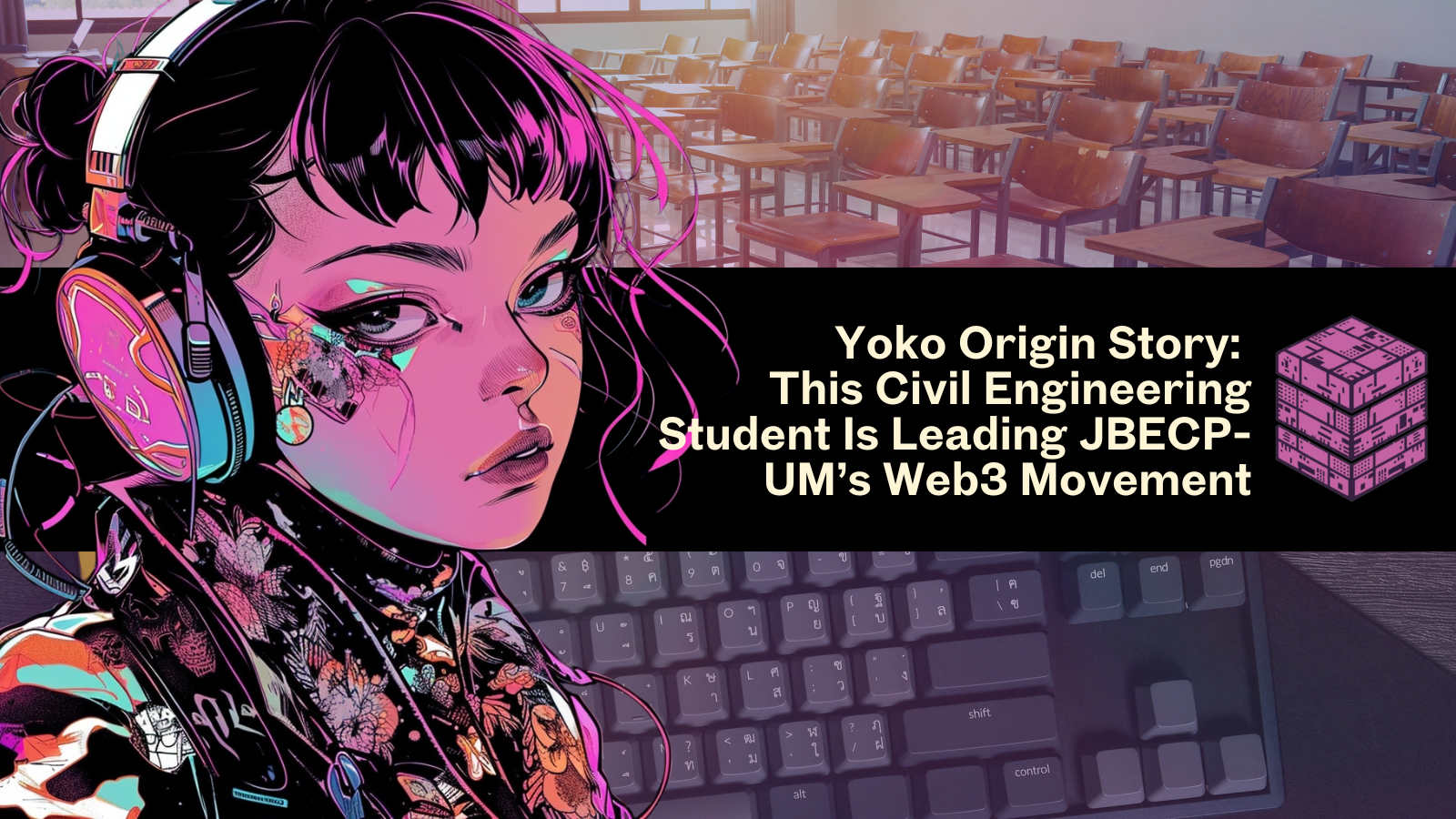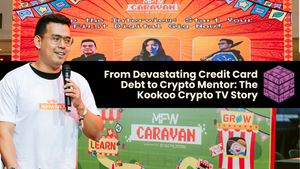Web3 education is often boxed into computer science classrooms. But in Davao City, one student organization is redrawing the lines.
At the University of Mindanao, something unexpected is happening. Blockchain is no longer just a buzzword for coders and IT majors. It’s becoming a movement, one that transcends disciplines, backgrounds, and expectations. At the center of this shift is JBECP-UM, the Junior Blockchain Education Consortium of the Philippines - University of Mindanao.
The organization didn't start with a grand plan or a university mandate. It began with hesitation, a coding bootcamp, and a few curious students who didn’t even consider themselves blockchain experts.
Among them was a civil engineering student who never imagined she would be leading a Web3 initiative. Her name is Yoko, and her journey from crypto beginner to organizational leader shows just how inclusive the blockchain space is becoming.
The Accidental Entry into Web3
Yoko didn’t grow up around code. She wasn’t planning on entering tech. Her Web3 story started during the pandemic, when she stumbled into a Twitter giveaway community that accepted GCash and crypto wallet payouts.
“At that time, I wanted to create a crypto wallet. So the best way to learn it is through YouTube.”
One video led to another. Then came the Telegram groups. She joined Filipino Web3 communities, then expanded to international ones. Volunteer work, like moderating, community management, and ambassadorship, followed. It wasn’t linear. It wasn’t easy. But it was real.
“As a person who doesn't really have any type of background or people to help you, it was really tough because you really have to not only learn by reading, but also learn through experience as well.”
What began as curiosity slowly built into confidence. The real shift came when fellow students tapped her to help create something bigger: a campus-wide blockchain education organization.
From Hesitation to Movement
JBECP-UM wasn’t always a sure thing. In fact, it almost didn’t happen. The idea was sparked during a local bootcamp, but the students approached to lead it weren’t sure they were ready. They didn’t think they knew enough. They weren’t sure anyone would listen.
That changed after one event inside the University of Mindanao. The team expected only computer science students to show up. But the room filled with accountancy majors, criminology students, and others far outside the tech track.
“Just by seeing that, you can really know that not only technical roles are really interested in Web3 education or blockchain education, but also various people from different courses are also like interested on this certain topic.”
The momentum was clear. JBECP-UM wasn’t just an experiment, it was a spark. And soon, it became the first official JBECP branch in Mindanao.
Building a Portfolio Without a Tech Degree
Yoko's role in JBECP-UM is backed by her experience in the broader Web3 ecosystem. Her portfolio didn’t come from a computer science curriculum. It came from volunteering.
She began as a moderator, answering questions, resolving wallet issues, and chatting with community members. That led to ambassadorships, then full-on community management. Now, she runs events, manages spreadsheets, updates developers, and serves as the bridge between users and project teams.
“If you’re a very new person here in the space, if ever you want to land a good job, you really have to have good experience.”
For Yoko, that experience came through hustle and consistency, not through a coding background. It’s a message she’s passionate about sharing with students who feel like they don’t belong in the space.
What Students Think About Blockchain
Inside her campus and beyond, Yoko sees two kinds of reactions to Web3. One is full of excitement. The other is skepticism.
“It generally falls into two categories. It’s either those who are really genuinely excited… or those who are still remaining skeptical of what Web3 or blockchain can offer because of the circulating idea of scams.”
To her, that makes education even more important. However, it must be the right kind of education, not preachy, not overwhelming.
“The education that I'm actually telling here is not the kind of education like you're trying to convert people into believers… but the education that simply represents the facts and lets people see themselves what they might be missing out.”
That approach has helped JBECP-UM connect with students from all disciplines. It’s also helped dispel the myth that blockchain is only for developers.
Looking Ahead to Careers and Curriculum
Yoko doesn’t plan on dropping her civil engineering degree. But she’s open about how her Web3 experience has reshaped her future. She now sees the space as a real career path, not just a hobby.
She aims for higher-level roles in the future, including business development, ecosystem growth, and other non-technical leadership tracks. Her advice for students interested in doing the same? Start with skills.
“The more non-technical skill sets that you have, the more opportunities of Web3 careers that you can also acquire here in the space.”
Yoko isn’t asking every school to suddenly teach blockchain. But she does hope to see more courses, more partnerships, and more seminars that make the space accessible, especially for beginners.
She points out that many real-world blockchain events today feel more like brand promotions than education. For students who barely know what blockchain is, that can feel alienating.
“Maybe more IRL events or events that are more focusing on truly educating people… and not more on promoting a certain Web3 project.”
A Community Redefining Access
JBECP-UM is still new, but it’s already being approached by students from other schools hoping to start their own branches. That demand shows how much the narrative is changing in Mindanao.
From a single bootcamp to a recognized movement, the group is proving that blockchain education doesn’t have to follow traditional academic pipelines. It can be open-source, peer-led, and inclusive.
And as for Yoko’s final advice to anyone thinking of stepping in?
“Be cautious, but stay curious.”











